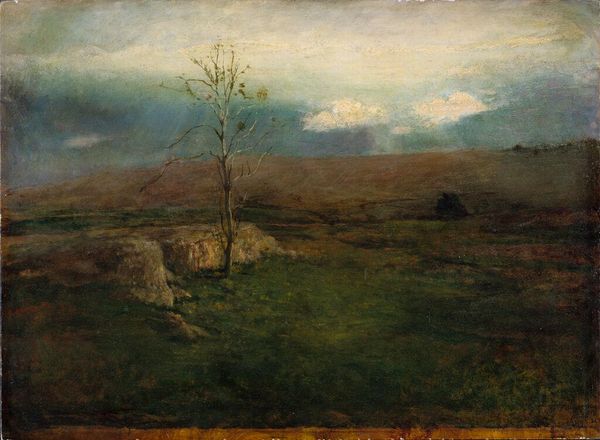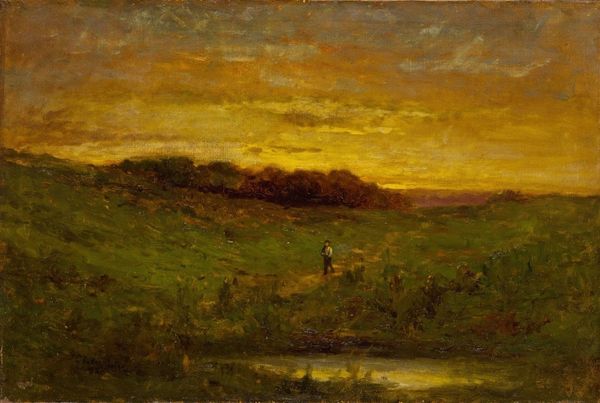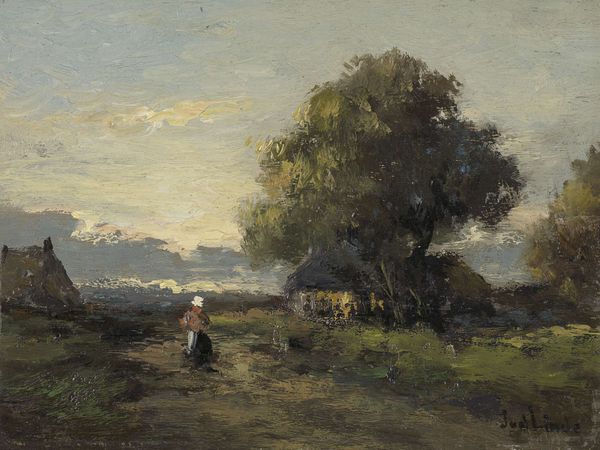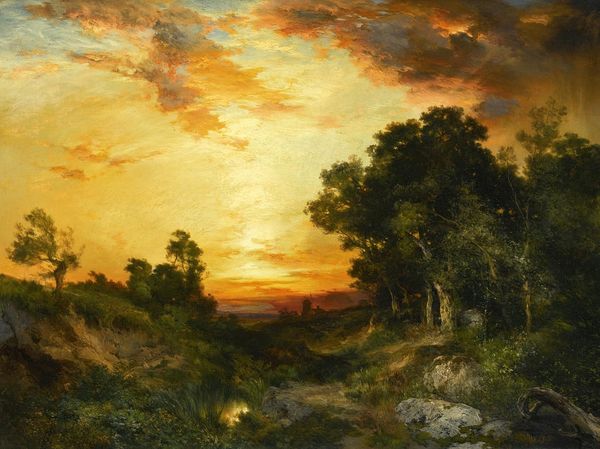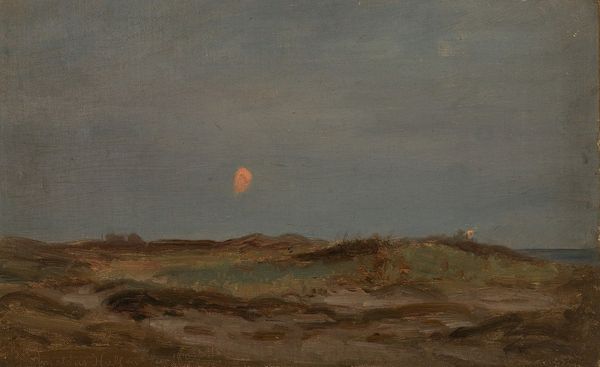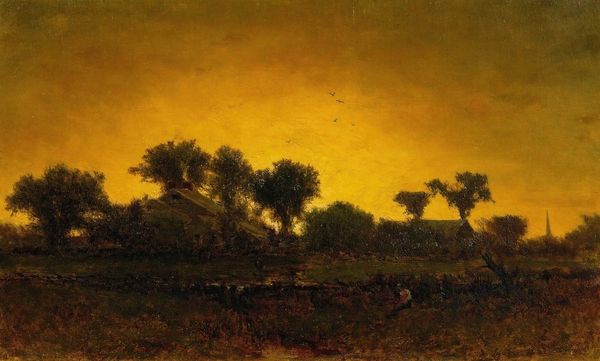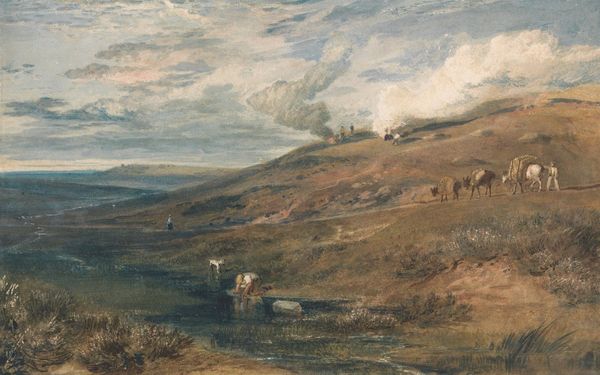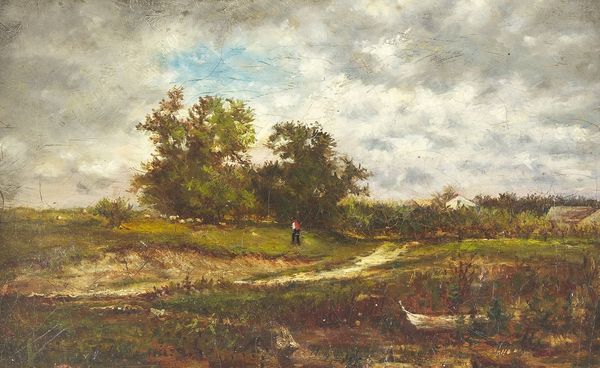
Copyright: Public Domain: Artvee
Charles-François Daubigny made this oil painting, “Troupeau de moutons au bord de la rivière” in nineteenth-century France. It captures a tranquil scene of sheep grazing by a river at sunset. Daubigny, a prominent figure in the Barbizon School, often painted en plein air, directly from nature. This approach marked a shift away from the academic tradition of studio painting. The Barbizon artists sought to represent the French countryside realistically, reflecting a growing interest in rural life and landscape. The image creates meaning through its visual codes, cultural references, and historical associations. The idyllic depiction of nature can be interpreted as a response to the rapid industrialization and urbanization occurring in France at the time. It's important to consider the social and economic transformations shaping artistic production. Further research into the Barbizon School and the socio-political context of 19th-century France would enrich your understanding of this artwork. Ultimately, the meaning of art is contingent on social and institutional context.
Comments
No comments
Be the first to comment and join the conversation on the ultimate creative platform.



